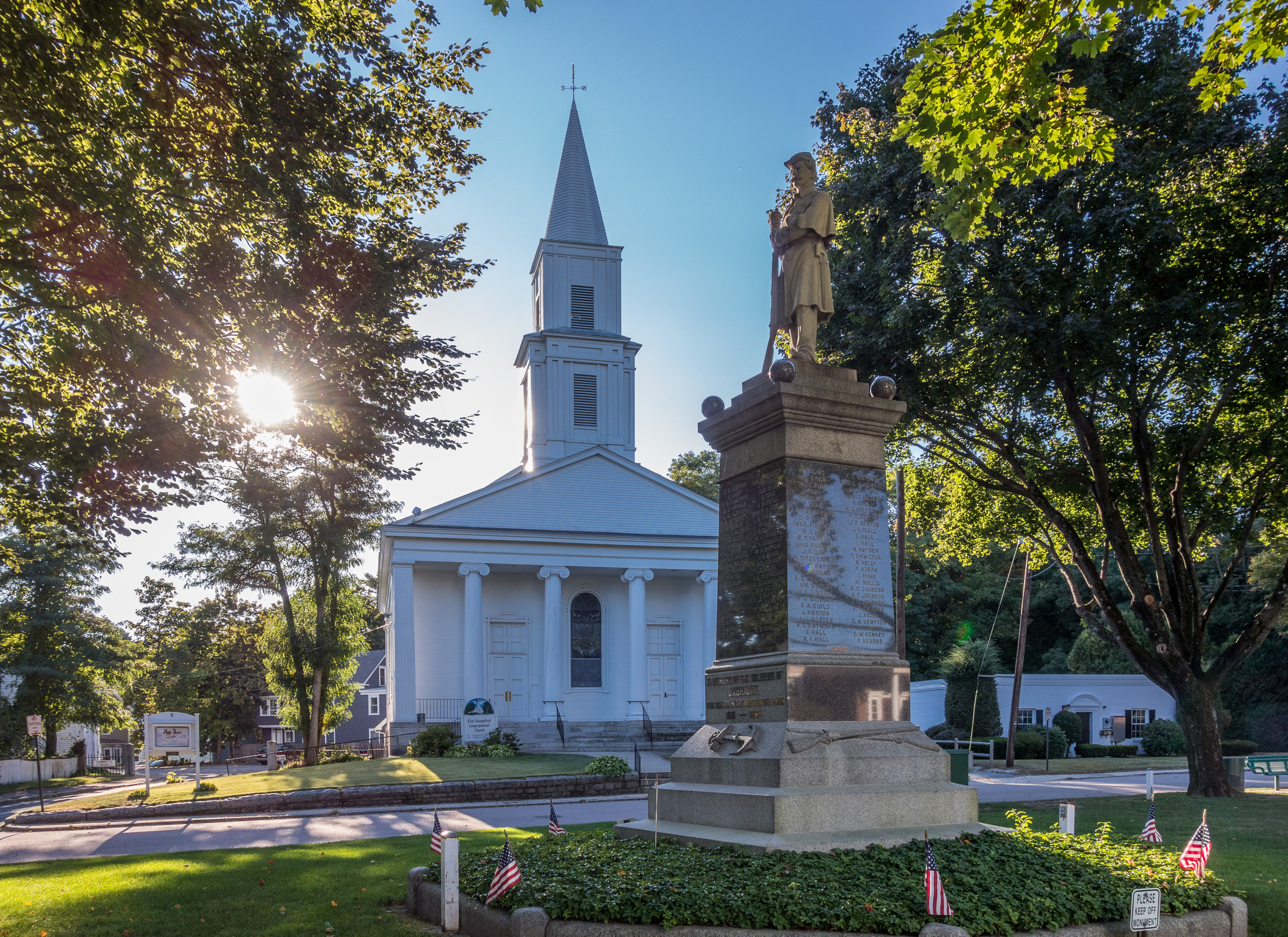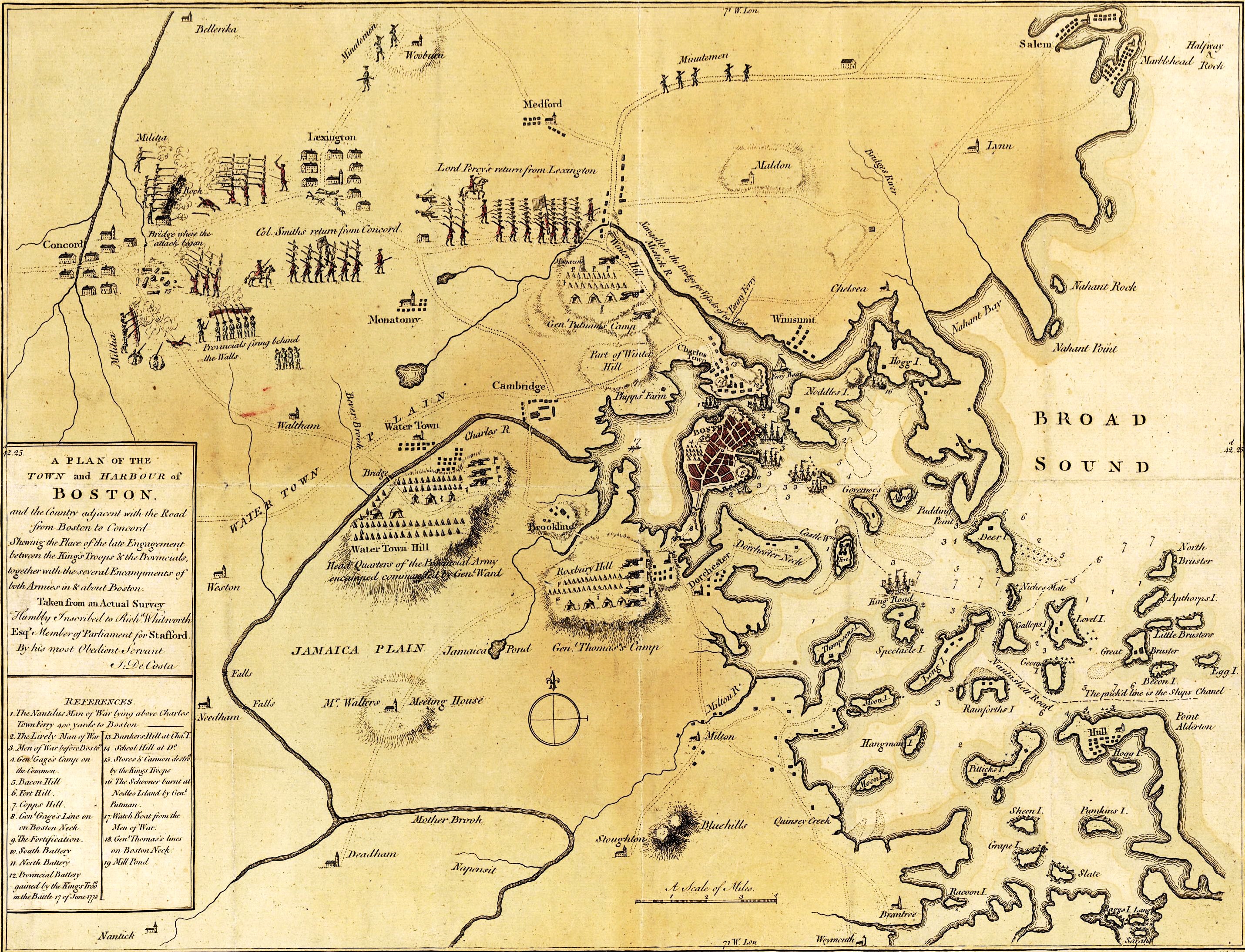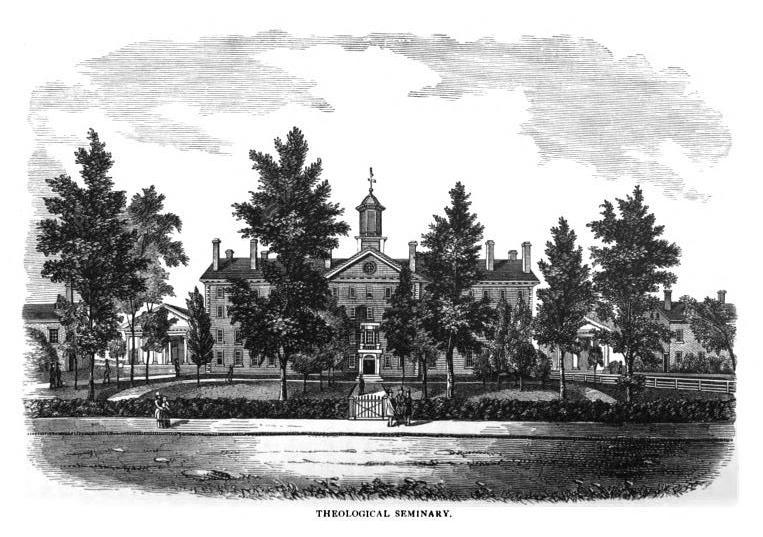|
Nathan Webb
Nathan Webb (April 9, 1705 March 17, 1772), an early-American Congregational Church minister. Early life He was born in Braintree, Norfolk County, Massachusetts, to Benjamin Webb (1667–1739) and Susanna Ballentine. He married Ruth Adams in Braintree on November 23, 1731. His nephew became President John Adams. John Adams recorded in his diary a visit in Uxbridge with his uncle Nathan Webb in March 1756. Career Webb was the first called minister of the new Congregational Church in the newly incorporated (1727) Town of Uxbridge. The Uxbridge Congregational Church was officially split from the church at Mendon, Massachusetts. Webb was called on January 6, 1731. This church was the first church to be built in the new town of Uxbridge. Webb was ordained at the Uxbridge First Congregational Church, then within Suffolk County, on February 3, 1731. The Uxbridge church is the first to be mentioned in a list of 45 new Congregational churches in New England which were started ... [...More Info...] [...Related Items...] OR: [Wikipedia] [Google] [Baidu] |
Braintree, Massachusetts
Braintree (), officially the Town of Braintree, is a municipality in Norfolk County, Massachusetts, United States. Although officially known as a towBraintree is a city, with a mayor-council government, mayor-council form of government, and is considered a city under Massachusetts law. The population was 39,143 at the 2020 census. The city is part of the Greater Boston area with access to the MBTA Red Line, and is a member of the Metropolitan Area Planning Council's South Shore Coalition. The first mayor of Braintree was Joe Sullivan who served until January 2020. The current mayor of Braintree is Charles Kokoros. Braintree, Massachusetts, is named after Braintree, Essex, in England. The town was first chartered in 1640. Later, some sections of Braintree formed separate municipalities: Quincy (1792), Randolph (1793), and Holbrook (1872). History European settlers first arrived in 1625. Subsequent to their arrival, the town was colonized in 1635, and ultimately incorp ... [...More Info...] [...Related Items...] OR: [Wikipedia] [Google] [Baidu] |
Battle Of Bunker Hill
The Battle of Bunker Hill was fought on June 17, 1775, during the Siege of Boston in the first stage of the American Revolutionary War. The battle is named after Bunker Hill in Charlestown, Massachusetts, which was peripherally involved in the battle. It was the original objective of both the colonial and British troops, though the majority of combat took place on the adjacent hill which later became known as Breed's Hill. On June 13, 1775, the leaders of the colonial forces besieging Boston learned that the British were planning to send troops out from the city to fortify the unoccupied hills surrounding the city, which would give them control of Boston Harbor. In response, 1,200 colonial troops under the command of William Prescott stealthily occupied Bunker Hill and Breed's Hill. During the night, the colonists constructed a strong redoubt on Breed's Hill, as well as smaller fortified lines across the Charlestown Peninsula. By daybreak of June 17, the British became ... [...More Info...] [...Related Items...] OR: [Wikipedia] [Google] [Baidu] |
Princeton Theological Seminary
Princeton Theological Seminary (PTSem), officially The Theological Seminary of the Presbyterian Church, is a private school of theology in Princeton, New Jersey. Founded in 1812 under the auspices of Archibald Alexander, the General Assembly of the Presbyterian Church (USA), and the College of New Jersey (now Princeton University), it is the second-oldest seminary in the United States. It is also the largest of ten seminaries associated with the Presbyterian Church. Princeton Seminary has long been influential in theological studies, with many leading biblical scholars, theologians, and clergy among its faculty and alumni. In addition, it operates one of the largest theological libraries in the world and maintains a number of special collections, including the Karl Barth Research Collection in the Center for Barth Studies. The seminary also manages an endowment of $1.13 billion, making it the third-wealthiest institution of higher learning in the state of New Jersey—aft ... [...More Info...] [...Related Items...] OR: [Wikipedia] [Google] [Baidu] |
Andover Theological Seminary
Andover Theological Seminary (1807–1965) was a Congregationalist seminary founded in 1807 and originally located in Andover, Massachusetts on the campus of Phillips Academy. From 1908 to 1931, it was located at Harvard University in Cambridge. It then collocated to Newton with Newton Theological Institution (NTI). Andover Theological Seminary and NTI formally merged in 1965 to form the Andover Newton Theological School (1965–2018). In its original and merged forms, it is the first and thus the oldest theological seminary founded in the United States. The seminary continues as Andover Newton Seminary at Yale Divinity School launched in 2017. History Andover Theological Seminary traces its roots to the late 18th century and the desire for a well-educated clergy among Congregationalists in the United States. That desire was expressed in the founding of Phillips Academy in 1778 for "the promotion of true Piety and Virtue". In 1806, a growing split within the Congregational c ... [...More Info...] [...Related Items...] OR: [Wikipedia] [Google] [Baidu] |
Massachusetts Missionary Society
Massachusetts (Massachusett language, Massachusett: ''Muhsachuweesut [Massachusett writing systems, məhswatʃəwiːsət],'' English: , ), officially the Commonwealth of Massachusetts, is the most populous U.S. state, state in the New England region of the Northeastern United States. It borders on the Atlantic Ocean and Gulf of Maine to the east, Connecticut and Rhode Island to the south, New Hampshire and Vermont to the north, and New York (state), New York to the west. The state's capital and List of municipalities in Massachusetts, most populous city, as well as its cultural and financial center, is Boston. Massachusetts is also home to the urban area, urban core of Greater Boston, the largest metropolitan area in New England and a region profoundly influential upon American History of the United States, history, academia, and the Economy of the United States, research economy. Originally dependent on agriculture, fishing, and trade. Massachusetts was transformed into a manuf ... [...More Info...] [...Related Items...] OR: [Wikipedia] [Google] [Baidu] |
Invasion Of Canada (1775)
The Invasion of Quebec (June 1775 – October 1776, french: Invasion du Québec) was the first major military initiative by the newly formed Continental Army during the American Revolutionary War. The objective of the campaign was to seize the Province of Quebec (part of modern-day Canada) from Great Britain, and persuade French-speaking to join the revolution on the side of the Thirteen Colonies. One expedition left Fort Ticonderoga under Richard Montgomery, besieged and captured Fort St. Johns, and very nearly captured British General Guy Carleton when taking Montreal. The other expedition, under Benedict Arnold, left Cambridge, Massachusetts and traveled with great difficulty through the wilderness of Maine to Quebec City. The two forces joined there, but they were defeated at the Battle of Quebec in December 1775. Montgomery's expedition set out from Fort Ticonderoga in late August, and in mid-September began besieging Fort St. Johns, the main defensive point south of ... [...More Info...] [...Related Items...] OR: [Wikipedia] [Google] [Baidu] |
Siege Of Boston
The siege of Boston (April 19, 1775 – March 17, 1776) was the opening phase of the American Revolutionary War. New England militiamen prevented the movement by land of the British Army, which was garrisoned in what was then the peninsular town of Boston, Massachusetts Bay. Both sides had to deal with resource, supply, and personnel issues over the course of the siege. British resupply and reinforcement was limited to sea access, which was impeded by American vessels. The British abandoned Boston after eleven months and transferred their troops and equipment to Nova Scotia. The siege began on April 19 after the Battles of Lexington and Concord, when Massachusetts militias blocked land access to Boston. The Continental Congress formed the Continental Army from the militias involved in the fighting and appointed George Washington as Commander in Chief. In June 1775, the British seized Bunker and Breed's Hills, from which the Continentals were preparing to bombard the city, ... [...More Info...] [...Related Items...] OR: [Wikipedia] [Google] [Baidu] |
Samuel Spring
Rev. Samuel Spring (1746–1819) was an early American Revolutionary War chaplain and Congregationalist minister. Early life and education Spring was born in Uxbridge in the Massachusetts Colony on February 27, 1746. His father was John Spring (1706–1794), a militia man and local wealthy farmer, and his mother was Sarah Read (1716–1800). He was a great-great grandson of John Spring, a Founder and early settler of Watertown, Massachusetts, who travelled to America under the patronage of his cousin Sir William Spring, 1st Baronet, and was the great-grandson of John Spring of Lavenham and the great-great grandson of Thomas Spring of Lavenham. John later commanded the company of militia from Uxbridge in the American Revolution. His father was the town's moderator, selectman, and surveyor of highways, but John lacked even a rudimentary education. Sarah remained determined that Samuel would have the best education possible. Spring studied under the Rev. Nathan Webb, founding past ... [...More Info...] [...Related Items...] OR: [Wikipedia] [Google] [Baidu] |
American Revolution
The American Revolution was an ideological and political revolution that occurred in British America between 1765 and 1791. The Americans in the Thirteen Colonies formed independent states that defeated the British in the American Revolutionary War (1775–1783), gaining independence from the British Crown and establishing the United States of America as the first nation-state founded on Enlightenment principles of liberal democracy. American colonists objected to being taxed by the Parliament of Great Britain, a body in which they had no direct representation. Before the 1760s, Britain's American colonies had enjoyed a high level of autonomy in their internal affairs, which were locally governed by colonial legislatures. During the 1760s, however, the British Parliament passed a number of acts that were intended to bring the American colonies under more direct rule from the British metropole and increasingly intertwine the economies of the colonies with those of Brit ... [...More Info...] [...Related Items...] OR: [Wikipedia] [Google] [Baidu] |
Baxter Hall
Baxter Hall was a military officer in the Continental Army, and a militia captain, of significance to the American Revolution. He was born in 1757 and died in 1842. Family Baxter Hall was one of nine children born to Lieutenant Nehemiah Hall and Sarah (Hayward), daughter of John Hayward and Hannah Baxter, in Uxbridge, Massachusetts, on October 10, 1757. Nehemiah Hall and his wife, Sarah, had nine children (all born in Uxbridge): John (3 Oct 1751 – 30 May 1755); Nathan (29 Aug 1753 – 13 Mar 1835); John (30 Jun 1755 – date ?); Baxter (10 Oct 1757 – 4 Jul 1842); Hannah (10 Oct 1759 – before 1768); David (2 Oct 1762 – 25 Jul 1798); Nehemiah (7 Dec 1764 – 29 Dec 1842); Hannah (19 Mar 1768 - ?); and Jonathan (18 Sep 1770 – 27 Jul 1848). The Baxter family (where Baxter Hall got his name from) were one of the founding families of Quincy, Massachusetts, with Gregory Baxter and his wife, Margaret Paddy. Their daughter, Abigail Baxter, married Joseph Adams and were Presid ... [...More Info...] [...Related Items...] OR: [Wikipedia] [Google] [Baidu] |
Ohio
Ohio () is a U.S. state, state in the Midwestern United States, Midwestern region of the United States. Of the List of states and territories of the United States, fifty U.S. states, it is the List of U.S. states and territories by area, 34th-largest by area, and with a population of nearly 11.8 million, is the List of U.S. states and territories by population, seventh-most populous and List of U.S. states and territories by population density, tenth-most densely populated. The state's capital and List of cities in Ohio, largest city is Columbus, Ohio, Columbus, with the Columbus metropolitan area, Ohio, Columbus metro area, Cincinnati metropolitan area, Greater Cincinnati, and Greater Cleveland being the List of metropolitan statistical areas, largest metropolitan areas. Ohio is bordered by Lake Erie to the north, Pennsylvania to the east, West Virginia to the southeast, Kentucky to the southwest, Indiana to the west, and Michigan to the northwest. Ohio is historically known as ... [...More Info...] [...Related Items...] OR: [Wikipedia] [Google] [Baidu] |
Taft Family
The Taft family of the United States has historic origins in Massachusetts; its members have served Ohio, Massachusetts, Vermont, Rhode Island, Utah, and the United States in various positions such as U.S. Representative (two), Governor of Ohio, Governor of Rhode Island, U.S. Senator (three), U.S. Secretary of Agriculture, U.S. Attorney General, U.S. Secretary of War (two), President of the United States, and Chief Justice of the United States. Overview The first known ancestor of the Taft family is Richard Robert Taft, who died in County Louth, Kingdom of Ireland in 1700, which is also where his son, Robert Taft Sr., was born circa 1640. Robert Taft Sr. would be the first Taft to migrate to what is now the United States. He married his wife Sarah Simpson, who was born in January 1640 in England, in 1668 in Braintree, Massachusetts. Robert Taft Sr. began a homestead in what is today Uxbridge and then Mendon, circa 1680, and which was where he and his wife died in 1725 and 1 ... [...More Info...] [...Related Items...] OR: [Wikipedia] [Google] [Baidu] |








